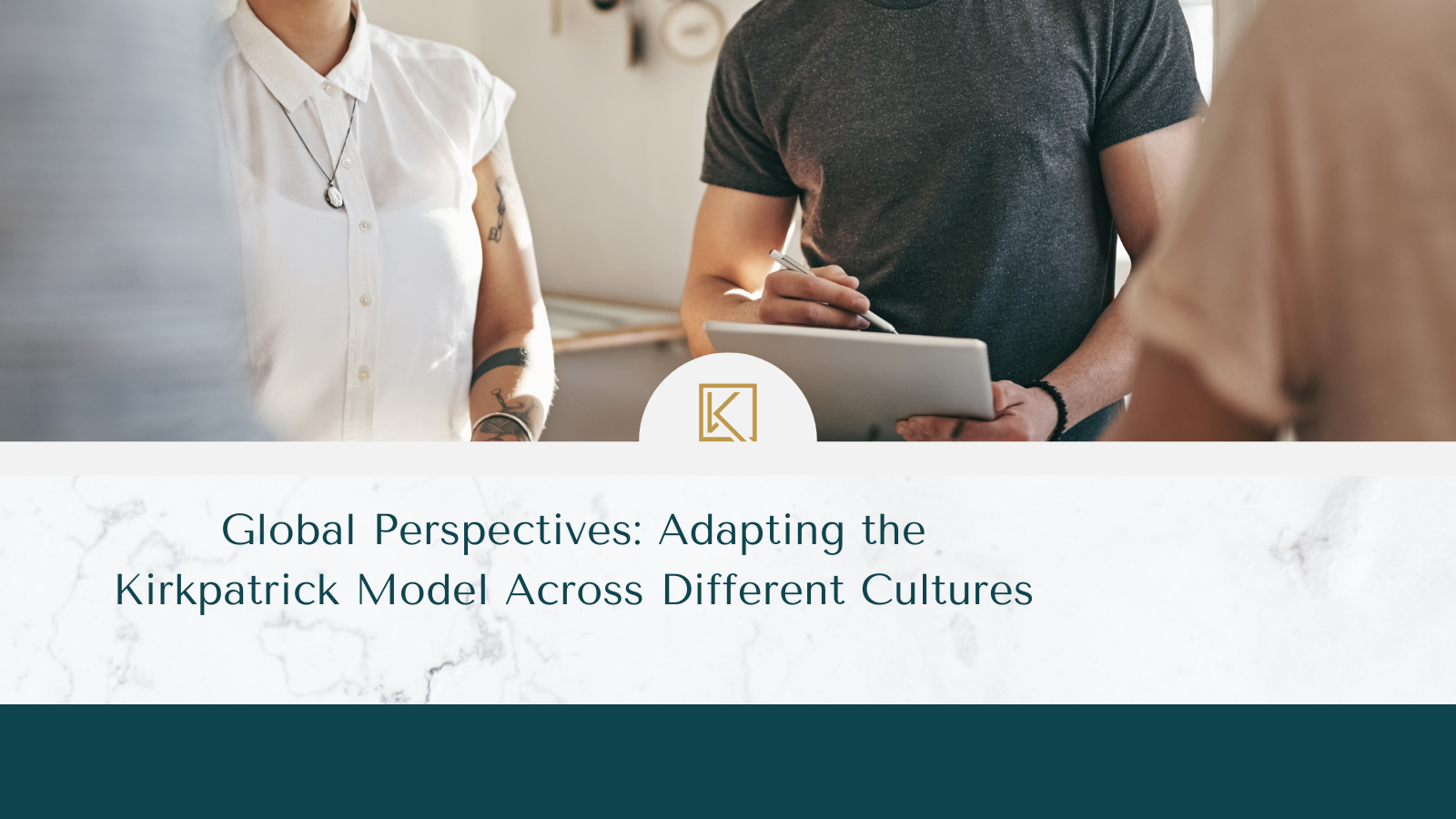Global Perspectives: Adapting the Kirkpatrick Model Across Different Cultures: By Wendy Kayser Kirkpatrick

One of the most frequent questions we hear at Kirkpatrick Partners is, “Will the Kirkpatrick Model work for us?” This often relates directly to cultural differences. Spoiler alert: the short answer is a resounding yes! The Kirkpatrick Model consistently delivers results thanks to its elegant simplicity and remarkable flexibility.
Regardless of your location and the type of training you plan to evaluate, you can count on the Kirkpatrick Model to work for you. In this article, Kirkpatrick Affiliates from around the world share insights into the specific adaptations they’ve made to ensure the model produces positive outcomes in their regions.
In various languages, certain terms need to be carefully defined for a thorough understanding of the model. “The Kirkpatrick Model does not require any significant adaptation in Brazil,” says Regina Camargo, CEO and founder of Across. “Of course, we carefully translate the language and take care with terms that can be ambiguous in our language, such as accountable and responsible.”
In Latin America, there’s a strong preference for highly interactive training sessions. To address this, Carmago incorporates frequent and diverse exercises that prioritize learner engagement. These activities aren’t just about imparting knowledge; they also focus on developing participant skills and boosting confidence. Additionally, they allow ample time for meaningful discussions, fostering an enriching learning environment.
The Kirkpatrick Model
Level 4: Results
The degree to which targeted outcomes occur as a result of the training and support and accountability package
Level 3: Behavior
The degree to which participants apply what they learned during training when they are back on the job
Level 2: Learning
The degree to which participants acquire the intended knowledge, skills, attitude, confidence, and commitment based on their participation in the training
Level 1: Reaction
The degree to which participants find the training favorable, engaging, and relevant to their jobs
Camargo, who is fluent in English and teaches Kirkpatrick certification in both Portuguese and Spanish, notes that certain insights are universal. For instance, the Kirkpatrick Foundational Principle #1, “The End is the Beginning,” is a key concept that resonates throughout Latin America. The same is true for building business partnerships.
“In the German language the English words accountable and responsible are the same word,” says Melanie Martinelli, founder of Going Beyond Training. “Leading Indicator is a very English term as well.” These are minor concerns; what’s crucial is ensuring a shared understanding of the terminology within the scope of training evaluation.
According to Martinelli, the Blended Evaluation Plan® approach is a key element of the Kirkpatrick Model that makes it effective across cultures. This involves collecting evaluation data from various sources using different methods at all four Kirkpatrick levels. This helps to mitigate the impact of cultural norms on data accuracy. For example, if direct feedback is less common in a particular culture, relying on participant feedback to assess instructor or program quality may not be ideal. Instead, incorporating input from a dedicated observer or feedback from supervisors and managers, alongside participant surveys, provides a more comprehensive and accurate assessment.
Another factor that contributes to the Kirkpatrick Model’s adaptability across cultures is its inherent flexibility. “Some cultures want to see the proof of causality,” says Martinelli. “And other cultures find 80% certainty fine.” This allows training evaluators to tailor the rigor of their evaluation efforts to match the needs of their stakeholders. Whether it’s incorporating more or less numeric data and testimonials into program impact reports, the goal is to align with local and organizational cultures. The key is asking the right questions upfront to get a clear understanding of the expectations.
Government regulations and corporate policies create a similar situation, despite not being quite the same as cultural differences. If you are conducting training in another country or working with multiple organizations worldwide, it’s a good idea to get familiar with their evaluation requirements. If the government sponsors the training, they may have specific evaluation forms and questions that must be submitted for the training to be approved and reimbursed.
The Kirkpatrick Model is also helpful in evolving cultures. Take the Middle East, for example. In the past, the focus was on rapid national development, sometimes at the cost of workforce training and development. However, there has been a notable shift to a more diversified, knowledge-based economy, along with a renewed emphasis on professional development. “This new focus on people development creates heightened interest in evaluating the business impact of training initiatives,” says Maha Khatib, L&D Senior Consultant based in UAE.
The shifting business landscape in the Middle East is moving in the right direction, but according to Khatib, there is still a valuable opportunity to make the most of middle management in bridging the gap between training and on-the-job application. And for organizations that are new to evaluating training effectiveness beyond Level 1 Reaction, taking a cue from the Middle East’s journey could offer valuable insights.
The Kirkpatrick Model is incredibly adaptable, meeting professionals, programs, and cultures right where they are. Even if you’re new to evaluation, there is a simple entry point. Start by selecting a program that is important to your organization or your customers. Then, pinpoint the Level 4 Results the organization wants to achieve and how the program supports them. Next, identify what people should do on the job as a result of the training. Brainstorm various ways to support graduates in applying these tasks effectively. This blend of on-the-job application and support forms your Level 3 Behavior package. Whenever possible, determine these things before developing any training programs or materials. Then, determine your approach for evaluating Level 2 Learning and Level 1 Reaction.
If creating a four-level evaluation plan sounds daunting, don’t worry. There are plenty of tools and support resources available.
Interested in mastering the Kirkpatrick Model? Dive into the Kirkpatrick Evaluation Toolkit, your comprehensive resource for streamlined and impactful evaluation. Learn more here!





